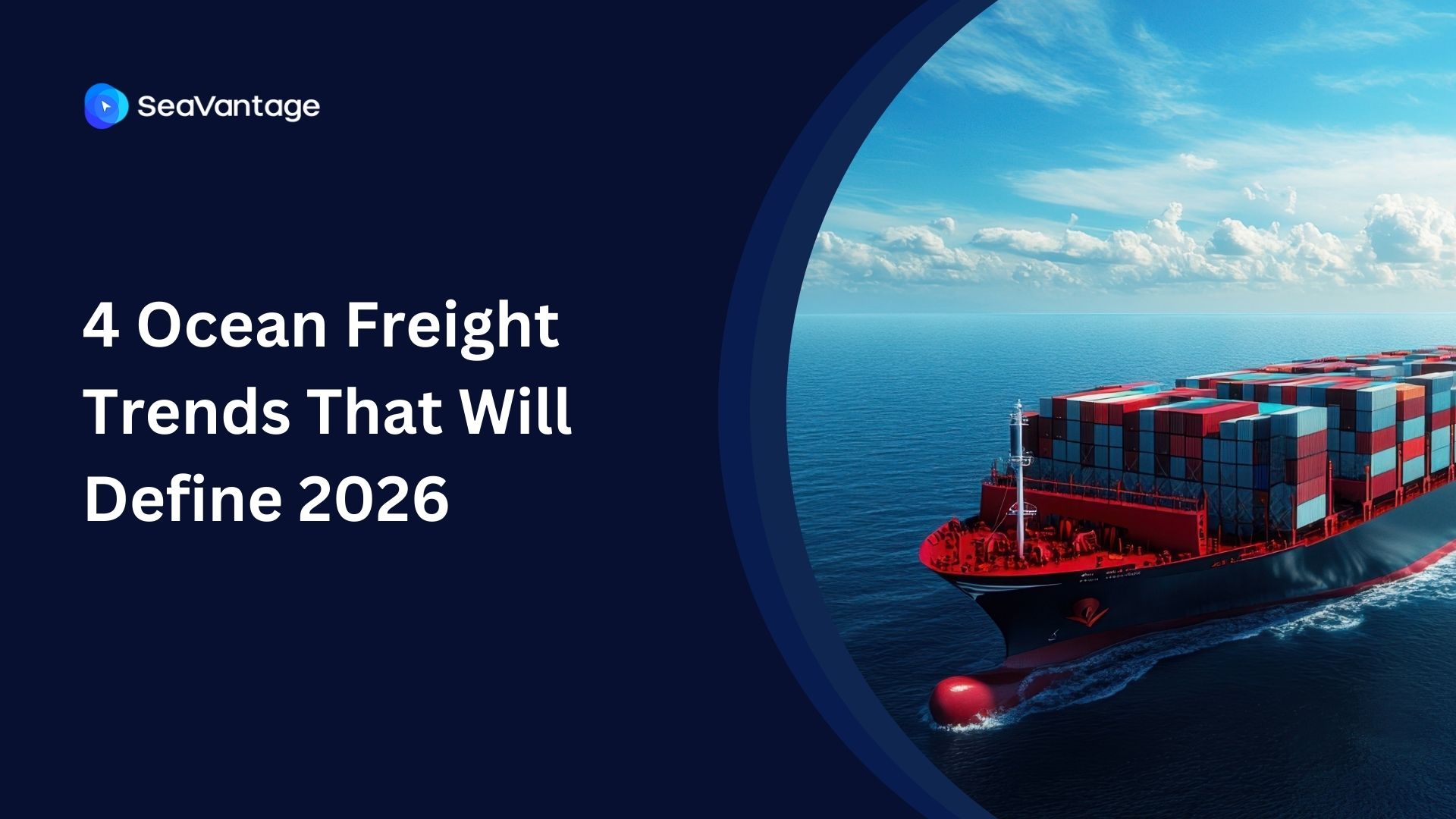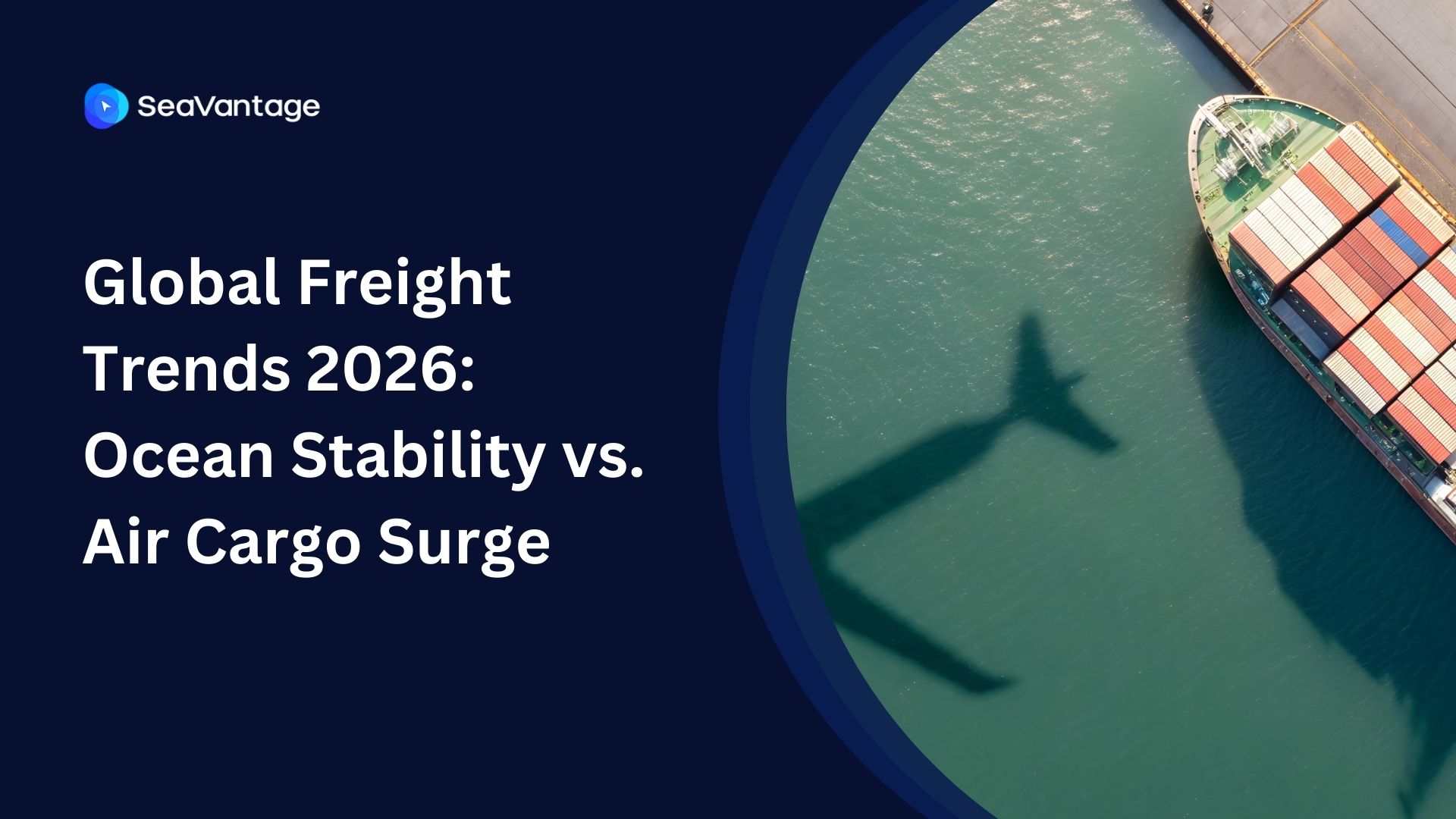Shipping Container Tracking in 2025: Best Practices and Modern Tools Explained

Shipping Container Tracking in 2025: Best Practices and Modern Tools Explained
In a world where global trade drives economies, tracking shipping containers accurately is key for good supply chain management. Imagine knowing the exact location and condition of your shipment at any time. This level of visibility improves efficiency and builds trust among all parties involved.
Container tracking has evolved significantly, transitioning from manual processes to cutting-edge technologies that leverage real-time data. This article looks at old and new tracking methods. It explores how these tools work together. It also shows how predictive insights are changing supply chain visibility.
Understanding Traditional Container Tracking Methods
Container Numbers
A container number is a unique code used to identify shipping containers. It usually follows the ISO 6346 standard, made up of four letters and seven numbers.
The letters show the owner or leasing company and the numbers include a unique ID and a check digit for accuracy. This number helps track containers, manage cargo, and improve visibility in global shipping. Using container numbers correctly is key to avoiding delays and keeping supply chains efficient.
Master Bill of Lading (MBL)
The master bill of lading is a key document issued by the shipping line, detailing the shipment’s contents, origin, and destination. It serves as the contract between the shipper and the carrier. Acting as a contract and receipt, the MBL provides essential information for tracking shipments during intermodal transit.
The MBL is primarily used when a freight forwarder consolidates multiple shipments under a single document but needs to coordinate with the carrier. Supply chain managers rely on this document to validate and monitor cargo movements.
Booking Numbers
Booking numbers link shipments to specific transport arrangements. These numbers make it easier to find shipments in carrier systems. They are often used with container numbers and MBLs for better tracking.
Shippers use the booking number to check the status of their cargo. This helps them communicate easily with carriers or freight forwarders. Understanding and using the booking number correctly is essential for seamless operations in global supply chain management.
Track Your Container Using SeaVantage Cargo Insight
Exploring Modern Tracking Technologies
IoT Devices
The Internet of Things (IoT) has transformed container tracking. IoT-enabled devices, such as GPS trackers and RFID tags, offer real-time location data and environmental monitoring. For example, GPS trackers embedded in containers provide constant updates on their whereabouts, while RFID technology facilitates automated identification at checkpoints.
Beyond location tracking, IoT devices monitor conditions like temperature and humidity, ensuring the safe transport of sensitive goods such as pharmaceuticals and perishables.
AIS Ship Signals
The Automatic Identification System (AIS) transmits real-time data about vessel movements, including position, speed, and destination. This technology plays a key role in maritime tracking, allowing supply chain managers to monitor container ships and other ships and anticipate potential delays caused by extreme weather events or port congestion.
Advantages of Modern Technologies
Modern tracking technologies address the limitations of traditional methods. For instance, while container numbers and MBLs offer static information, IoT devices and AIS signals provide dynamic, real-time insights that enable proactive decision-making.
The Synergy of Integrated Tracking Tools
Combining traditional and modern tracking methods creates a cohesive system that enhances visibility and control. For example, integrating container numbers, MBLs, and booking numbers with IoT and AIS data ensures comprehensive tracking capabilities.
Environmental Monitoring
IoT devices equipped with sensors can detect temperature fluctuations, humidity levels, and even shocks during transit. This data integration is invaluable for industries transporting sensitive goods, as it helps prevent spoilage and ensures compliance with regulatory standards.
Improved Decision-Making
Integrated tracking tools enable supply chain managers to analyze data holistically, facilitating better decisions. For instance, a delayed shipment’s AIS data can prompt route adjustments, while IoT sensor alerts can trigger corrective actions to protect cargo.
Leveraging Predictive Insights and Analytics
Predictive analytics harnesses historical data to forecast future events, offering supply chain managers a competitive edge. By looking at patterns in vessel and carrier performance, predictive tools can estimate delays. They also help optimize routes and improve estimated times of arrival (ETAs).
Practical Benefits
- Reduced Lead Times: Predictive models identify bottlenecks and suggest alternative routes, shortening transit times.
- Proactive Issue Management: Early identification of potential disruptions enables swift resolution, minimizing operational impact.
- Enhanced ETAs: Accurate arrival predictions improve planning and customer satisfaction.
Case Studies and Practical Examples
Case Study: Pharmaceutical Logistics
A global pharmaceutical company integrated IoT and predictive analytics to monitor temperature-sensitive shipments. By combining IoT sensors with real-time AIS data, the company reduced spoilage by 25% and achieved faster delivery times.
Practical Example: Retail Supply Chain
A major retailer used booking numbers and container tracking systems to optimize inventory levels. Predictive analytics highlighted recurring delays at specific ports, prompting strategic shifts that reduced stockouts and improved fulfillment rates.
Future Trends in Container Tracking
The future of container tracking is poised for transformative innovation. Emerging technologies such as blockchain, artificial intelligence (AI), and machine learning promise unprecedented levels of transparency and efficiency. Blockchain, for instance, can create tamper-proof records of container movements, while AI-driven analytics refine predictive models.
Sustainability is also driving advancements. Solar-powered IoT devices and eco-friendly tracking solutions align with global efforts to reduce carbon footprints.
Conclusion
Container tracking has changed a lot. It has moved from old methods like container numbers and MBLs to new technology. Now, we use IoT and predictive analytics.
This evolution has greatly improved supply chain management. By integrating diverse tools and leveraging historical data, businesses can achieve unparalleled visibility and efficiency.
Embrace these innovations to transform your operations and stay ahead in a competitive landscape. Explore advanced tracking systems or connect with experts to tailor solutions to your unique needs.
2025년 9월, 주요 글로벌 항만에서 어떤 운송사가 가장 긴 선박 체류 시간을 기록했는지 확인해보세요. 트렌드를 비교하고, 지연을 파악하며, 전체 항만 데이터를 통해 운송 전략을 최적화할 수 있습니다.
2025년 8월, 주요 글로벌 항만에서 어떤 운송사가 가장 긴 선박 체류 시간을 기록했는지 확인해보세요. 트렌드를 비교하고, 지연을 파악하며, 전체 항만 데이터를 통해 운송 전략을 최적화할 수 있습니다.
2025년 7월, 주요 글로벌 항만에서 어떤 운송사가 가장 긴 선박 체류 시간을 기록했는지 확인해보세요. 트렌드를 비교하고, 지연을 파악하며, 전체 항만 데이터를 통해 운송 전략을 최적화할 수 있습니다.
iscover the 4 critical ocean freight trends for 2026, from the Red Sea reopening and fleet overcapacity to shifting global trade maps. Prepare your supply chain now.
Discover key 2026 freight market trends: Port of Houston expansion, air cargo "super peak," and ocean freight stability. Plan your supply chain with SeaVantage.
Explore November 2025 global port dwell time data. See which ports and carriers led in efficiency across Antwerp, Busan, Long Beach, Rotterdam, and Singapore.



.svg)





.jpg)

.png)